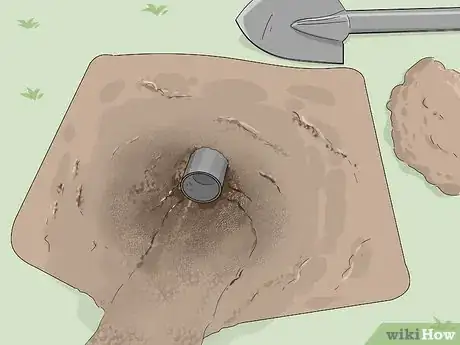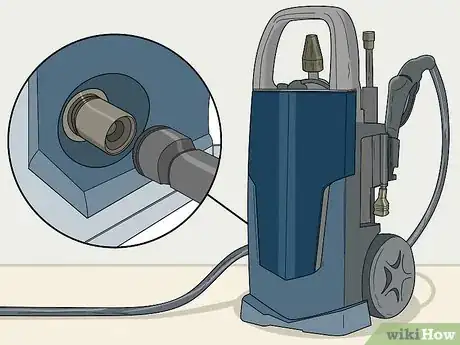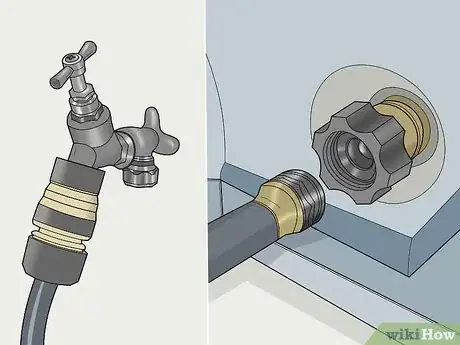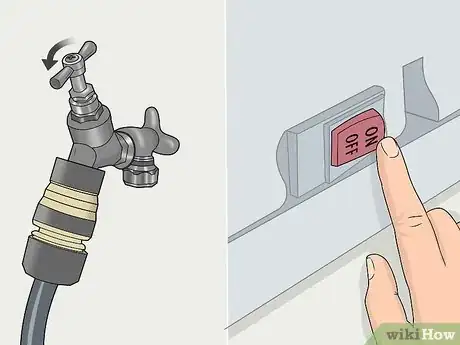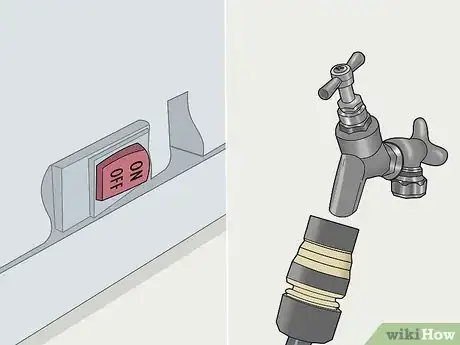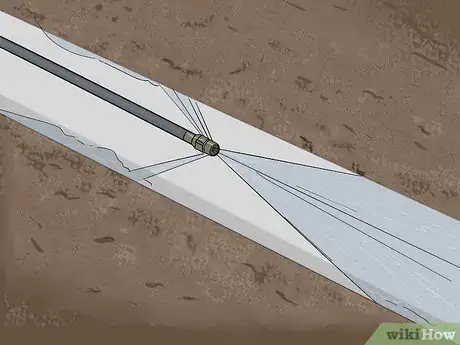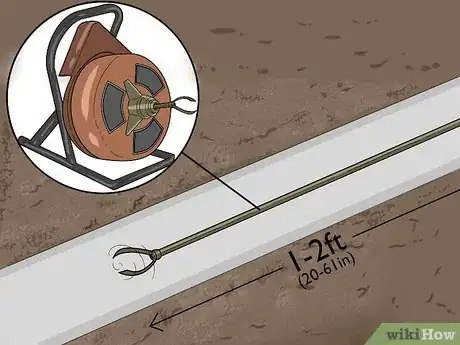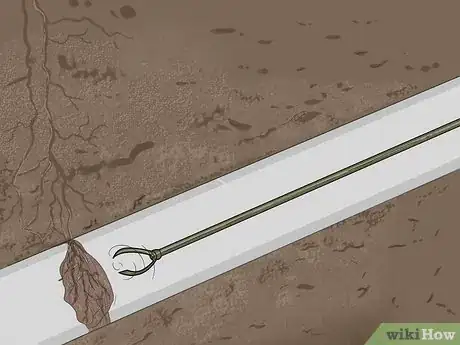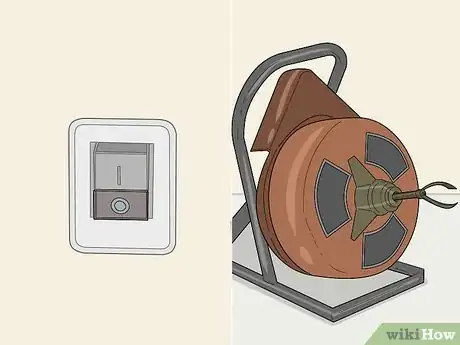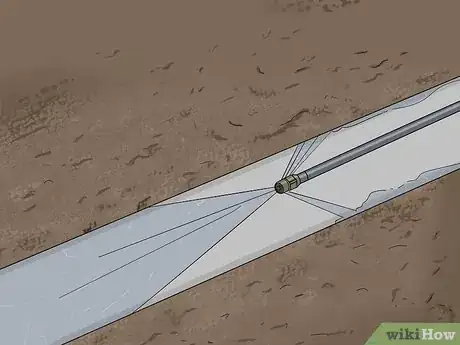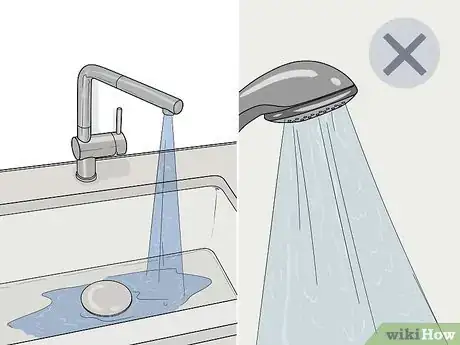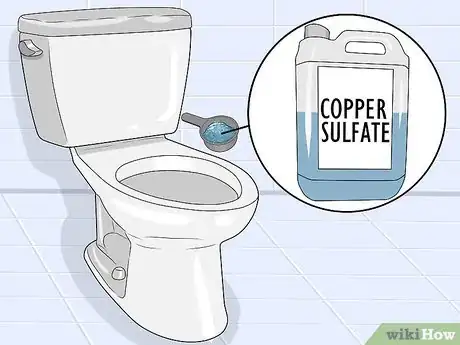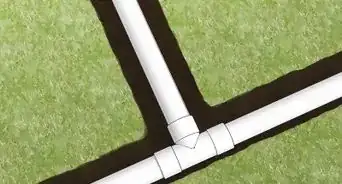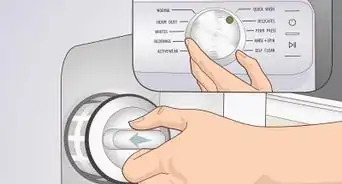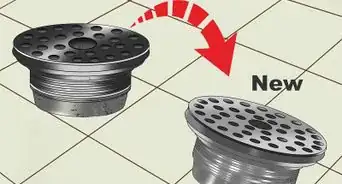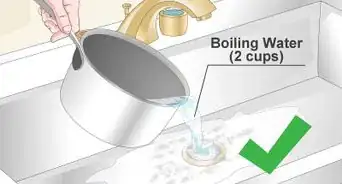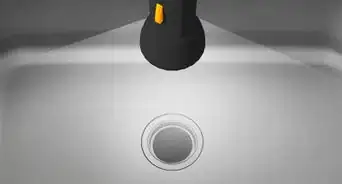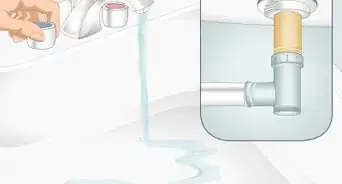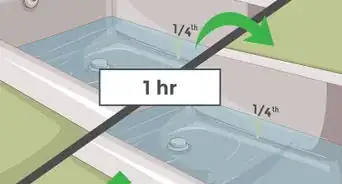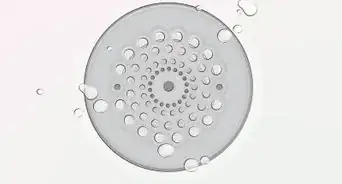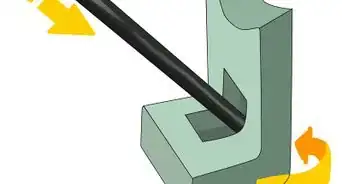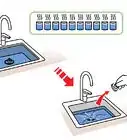This article was co-authored by David Balkan and by wikiHow staff writer, Hunter Rising. David Balkan is a Professional Plumber, CEO of Balkan Sewer and Water Main Service, and President of Balkan Sewer and Drain Cleaning. As a hands-on owner of these companies for over 40 years, David is knowledgeable about water service lines, sewers, and drain line issues. David is a Committee Chairman of the Master Plumbers Council and has sat on the Executive Committee of the Sub Surface Plumbers Association of New York for over 30 years. His knowledge and solution-oriented approach contributed to Balkan Sewer and Water Main Service being the largest and most trusted service in New York City and the recipient of the 2017 Angie’s List Super Service Award.
There are 14 references cited in this article, which can be found at the bottom of the page.
This article has been viewed 69,143 times.
A septic leach field, also known as a drain field, disperses wastewater from your septic tank and removes contaminants before it soaks deeper into the soil. Over time, leach fields can build up sludge or tree roots can grow into them to form clogs, which causes your septic tank to back up or leak into your yard. If you suspect one of the leach field pipes has a clog, the easiest way to clean it is with a pressurized sewer jetter. If the clog doesn’t clear with a jetter, there may be tree roots that you can cut with a mechanical auger. With a little bit of regular maintenance and care, you can keep your leach field clean and functioning!
Steps
Cleaning Pipes with a Sewer Jetter
-
1Dig a hole at the end of your leach system pipes to expose them. Check the blueprints of your property so you can locate where the leach field’s pipes end. Use a shovel to dig your hole, being careful not to hit or damage the leach pipe with the blade. Expose the entire diameter of the pipe so you can easily feed a sewer jetter hose into it later on. Continue digging up the remaining pipes so you’re able to clean them all out.[1]
- If you aren’t sure where the ends of the pipes are in your yard, contact a septic specialist to locate the system for you.
- You won’t know exactly which leach field pipe has a clog unless you hire a septic specialist to check them with a camera. Otherwise, you need to expose the ends of all the leach field pipes.
Tip: Hire specialists to drain your yard if the septic system backed up and leaked into the topsoil. Don’t try to pump the wastewater yourself since it contains harmful bacteria and contaminants.
-
2Feed the end of a sewer jetter into the end of a leach pipe. A sewer jetter is a long, thin hose that shoots streams of pressurized water forward and backward through the pipe. Locate the end of the sewer jetter hose that has the nozzle attached to it and slide it into one of the leach field pipes. Push the sewer jetter about 2–3 feet (0.61–0.91 m) into the pipe before stopping.[2]
- You can buy sewer jetter hoses from your local hardware or yard care store.
- You will need to clean each leach field pipe with the sewer jetter in order for the system to work correctly again.
- It may be difficult to feed the sewer jetter into the pipe, but it will be easier once water flows through it when you start cleaning.
Advertisement -
3Connect the other end of the sewer jetter hose to a pressure washer. Use a gas-powered pressure washer that has a flow of 2–4 gallons (7.6–15.1 L) per minute so it can cut through any stuck-on sludge or roots inside the pipes. Run the other end of your sewer jetter to the output valve on the pressure washer, which is usually located on the side of the machine. Screw the jetter hose securely onto the pressure washer to attach it.[3]
- You can buy pressure washers from hardware or yard care stores. Ask the employees if they offer equipment rental so you don’t have to buy the pressure washer.
- Avoid using an electric pressure washer since it won’t provide as much power for cleaning the leach pipes.
-
4Attach a garden hose to the water intake on the pressure washer. Look for the water intake valve on the side of the pressure washer, which is usually labeled or has a blue plastic piece around it. Screw the end of the hose into the valve until it’s hand-tight so water flows through the machine.[4]
- Most pressure washer intake valves are made for hoses with a 1⁄2 inch (1.3 cm) diameter. Check the manual for your pressure washer to see if the valve size uses a different size hose.
-
5Turn on your hose and pressure washer. Start your hose before turning on the pressure washer, or else you could damage the machine. Wait for the water to flow out from the end of the leach pipe before you turn you start the pressure washer. Use the switch on the pressure washer to turn it on before pulling the ripcord to start the engine. Once the engine is running, the sewer jetter will shoot out high-pressure streams of water forward and backward.[5]
- Wear safety glasses while working with a pressure washer so you don’t accidentally spray your eyes.
-
6Push and twist the jetter hose to break apart the clog easier. As the pressurized water flows through the sewer jetter, it will pull itself further into the leach pipe. When you feel the hose stop moving, pull it back and twist the hose to direct the stream of water in a different direction. Push the sewer jetter back against the clog to try and break it apart. Continue twisting and pushing the jetter hose deeper into the leach pipe until you don’t feel the clog anymore.[6]
- If the sewer jetter doesn’t push further into the pipe, then the clog may be too large to break apart. Either try using a mechanical auger or calling a septic specialist to replace the section of pipe.
-
7Turn off the pressure washer and hose before removing the sewer jetter. When you’re finished breaking apart the clog, start by turning the switch on the pressure washer to the Off position. Shut off the water supply for your garden hose and let the remaining water flow out through the sewer jetter. Slowly pull the sewer jetter back out of the leach field pipe so you don’t damage it or the pipe.[7]
- Wear gloves when you remove the sewer jetter since it could be dirty and have bacteria on it.
Warning: Don’t pull the sewer jetter out of the leach pipe while it’s running since it will whip around and could hurt you.
-
8Continue cleaning out the other leach field pipes. Put the nozzle of the sewer jetter into another one of your leach field pipes and repeat the process of cleaning it out. If you don’t feel any resistance inside the pipe, it may not have a large clog but the pressurized water will still remove sludge or roots that got into the pipes. Make sure you insert the sewer jetter into the pipe completely before turning it on, and leave it in the pipe until you shut it off.[8]
- Even if some of your leach field pipes don’t have clogs, cleaning them will reduce the chance of a clog forming in the future.
Removing Tree Roots
-
1Locate and uncover the distribution box for your leach field. The distribution box for your septic system is usually located past the main tank and connects to all of the leach field pipes. Check the blueprints for your property to see where the distribution box is in your yard. Use a shovel to uncover the distribution box before using a pry bar to lift the lid.[9]
- If you aren’t able to find the distribution box in your septic system, hire a professional service to locate it for you.
Variation: Older septic systems may not have a distribution box. If that’s the case, then dig holes at the end of each of your leach field’s pipes so you can access them from the other end.
-
2Feed the end of a mechanical auger into one of the leach field pipes. A mechanical auger has a rotating bit attached to a long snaking cable to cut through overgrown roots and clogs. Get a mechanical drum auger that has a U-shaped cutting blade at the end of the line. Guide the first 1–2 feet (30–61 cm) of the line into a pipe in your leach field.[10]
- You can buy a mechanical auger from a hardware store or online.
- Find out if the hardware store offers equipment rentals so you can use an auger without having to pay the full price.
-
3Put on safety glasses before turning on the auger. Get safety glasses that completely cover your eyes so you don’t accidentally get hurt from moving mechanical parts. Plug the auger into the nearest outlet, using an extension cord if you need to. Find the power switch on the auger and flip it to the On position to start the machine.[11]
-
4Push the auger deeper into the pipe to cut through the roots. Continue feeding the auger snake into the pipe until you meet resistance. Push and pull the auger back and forth to break apart the roots inside your pipe and cut them loose. Keep guiding the end of the auger deeper to make sure there aren’t other clogs further inside the pipe.[12]
- Some of the roots may get stuck on the end of the auger. Pull out as many of the roots as you’re able to so they don’t come loose inside your pipe again.
-
5Turn off the auger before you pull out the pipe. Once you don’t feel any more clogs in the leach field pipe, flip the switch on the auger to the Off position to shut it down. Wait for it to power down fully before pulling the snake out of the pipe. Work slowly so the end of the auger doesn’t come out too quickly and hurt you.[13]
- Don’t pull the auger out of the pipe while it’s still running since the end may whip around and hurt you.
-
6Flush the pipe with a sewer jetter to pull the roots out. Attach a sewer jetter to the output valve on a pressure washer and feed the nozzle into your pipe. Connect your garden hose to the intake valve on the pressure washer and turn on the water. Start the pressure washer and guide the jetter hose through the leach field pipe. The pressurized water will break apart any remaining clogs and force them out of the pipe.[14]
- You can get a sewer jetter from your local yard care or hardware store.
- Don’t run the sewer jetter while it’s outside of the pipe since it could whip around and hurt you.
Preventing Clogs
-
1Use less water to keep your system running smoothly. Avoid running water when you don’t need to since it can cause your septic system to overflow. Fix any leaking pipes or fixtures you have so you don’t waste any more water, and try using more efficient fixtures, such as faucet aerators for sinks or a toilet that flushes less water. With more efficient water use, you’ll be able to reduce the chances of septic back-up and save money on utilities.[15]
- Limit the length of your showers or how much water you use in a bath to help save on water.
-
2Avoid putting anything other than water and natural waste down your drains. Septic systems are only meant to handle human waste, water, soap, and toilet paper, so other items may cause clogs. Avoid putting paper towels, cleaning wipes, hygiene products, or any other solid waste down your drains so they don’t clog the leach field system. Make sure everyone in your household knows how to properly dispose of materials and let them know what can and can’t go down the drain.[16]
- Avoid putting chemical cleaners down the drain since they can kill the natural bacteria in your septic system that breaks down solid matter.
Warning: Don’t put oil or grease down your drain since they can solidify and cause clogs that are difficult to break apart and remove.
-
3Put copper sulfate into your toilet to kill any roots in the pipes. Cutting the roots inside your pipes won’t prevent them from regrowing and clogging the system again. Pour about ½ cup (256 g) of copper sulfate into your toilet at a time and keep flushing until they all go down the drain. Continue adding copper sulfate into your toilet until you’ve flushed about 2 pounds (0.91 kg) into your septic system. Avoid flushing or running water for 3–4 hours after treating the pipes so the compound has time to take effect.
- You can buy copper sulfate from a yard care store or online.
- Copper sulfate dries out the tree roots and kills them after a small amount of time.
- You can also add the copper sulfate directly to the septic system's distribution box if you're able.
- Repeat the process 2–3 times a year to keep tree roots from growing.
-
4Install a root barrier around the leach field to keep roots out of the pipes. Root barriers are sheets that you bury underground to prevent roots from extending past them. Dig a trench around your leach field pipes that is 2 feet (61 cm) deep and place the root barrier in it vertically. Fill the trench back so the soil can absorb some of the chemicals in the root barrier and keep roots away from the area.
- You can buy root barriers from garden supply stores or online.
- Don’t put root barriers completely around a tree or shrub since you could limit its growth and cause it to die.
-
5Have your septic system inspected every 3 years. Septic systems usually fill up after 3–5 years and need to be looked at or pumped by a professional. Hire a specialist to look at your septic system and check if there are any problems with the pipes or drains on your property. If they notice anything wrong, they’ll be able to give you options on how to fix them.[17]
Expert Q&A
-
QuestionIs it safe to work on my septic system myself?
 David BalkanDavid Balkan is a Professional Plumber, CEO of Balkan Sewer and Water Main Service, and President of Balkan Sewer and Drain Cleaning. As a hands-on owner of these companies for over 40 years, David is knowledgeable about water service lines, sewers, and drain line issues. David is a Committee Chairman of the Master Plumbers Council and has sat on the Executive Committee of the Sub Surface Plumbers Association of New York for over 30 years. His knowledge and solution-oriented approach contributed to Balkan Sewer and Water Main Service being the largest and most trusted service in New York City and the recipient of the 2017 Angie’s List Super Service Award.
David BalkanDavid Balkan is a Professional Plumber, CEO of Balkan Sewer and Water Main Service, and President of Balkan Sewer and Drain Cleaning. As a hands-on owner of these companies for over 40 years, David is knowledgeable about water service lines, sewers, and drain line issues. David is a Committee Chairman of the Master Plumbers Council and has sat on the Executive Committee of the Sub Surface Plumbers Association of New York for over 30 years. His knowledge and solution-oriented approach contributed to Balkan Sewer and Water Main Service being the largest and most trusted service in New York City and the recipient of the 2017 Angie’s List Super Service Award.
Professional Plumber & CEO of Balkan Sewer & Water Main No, you should contact a professional for that. People die every year from trying to work on their own septic system. Sewer gases build up in the system, and they're basically odorless and don't take long to cause you to become unconscious.
No, you should contact a professional for that. People die every year from trying to work on their own septic system. Sewer gases build up in the system, and they're basically odorless and don't take long to cause you to become unconscious.
Warnings
- Don’t try to remove a sewer jetter or mechanical auger from a pipe while they’re still running since they could whip around and hurt you.⧼thumbs_response⧽
- If the clog doesn’t come out of the leach field, you may need to hire septic specialists to replace part of the pipes.⧼thumbs_response⧽
- Wear safety glasses while working with power tools so you stay protected.⧼thumbs_response⧽
Things You’ll Need
Cleaning Sludge with a Sewer Jetter
- Shovel
- Work gloves
- Safety glasses
- Sewer jetter
- Pressure washer
- Garden hose
Removing Tree Roots
- Copper sulfate
- Shovel
- Mechanical auger
- Sewer jetter
- Pressure washer
- Garden hose
Preventing Clogs
- Root barrier
References
- ↑ https://youtu.be/M8cx_L8h2c0?t=72
- ↑ https://youtu.be/RvgRUeBokFk?t=275
- ↑ https://youtu.be/M8cx_L8h2c0?t=89
- ↑ https://pressurewashr.com/pressure-washer-hose-fittings-couplers-adapters-guide/
- ↑ https://youtu.be/RvgRUeBokFk?t=379
- ↑ https://youtu.be/RvgRUeBokFk?t=252
- ↑ https://youtu.be/Ld6jqzhjB6w?t=145
- ↑ https://youtu.be/Ld6jqzhjB6w?t=145
- ↑ https://septictankproblems.com/deep-surface-distribution-box-lid/
- ↑ https://info.kensplumbing.net/blog/how-to-protect-your-plumbing-from-tree-roots
- ↑ https://info.kensplumbing.net/blog/how-to-protect-your-plumbing-from-tree-roots
- ↑ https://info.kensplumbing.net/blog/how-to-protect-your-plumbing-from-tree-roots
- ↑ https://info.kensplumbing.net/blog/how-to-protect-your-plumbing-from-tree-roots
- ↑ https://www.plumbermag.com/how-to-articles/jetters_sewer_drain_materials/using_the_jetter_the_right_way_is_the_first_step_in_using_them
- ↑ https://www.doh.wa.gov/CommunityandEnvironment/WastewaterManagement/SepticSystem/CaringforYourSystem
- ↑ https://www3.epa.gov/npdes/pubs/homeowner_guide_long.pdf
- ↑ https://www3.epa.gov/npdes/pubs/homeowner_guide_long.pdf
